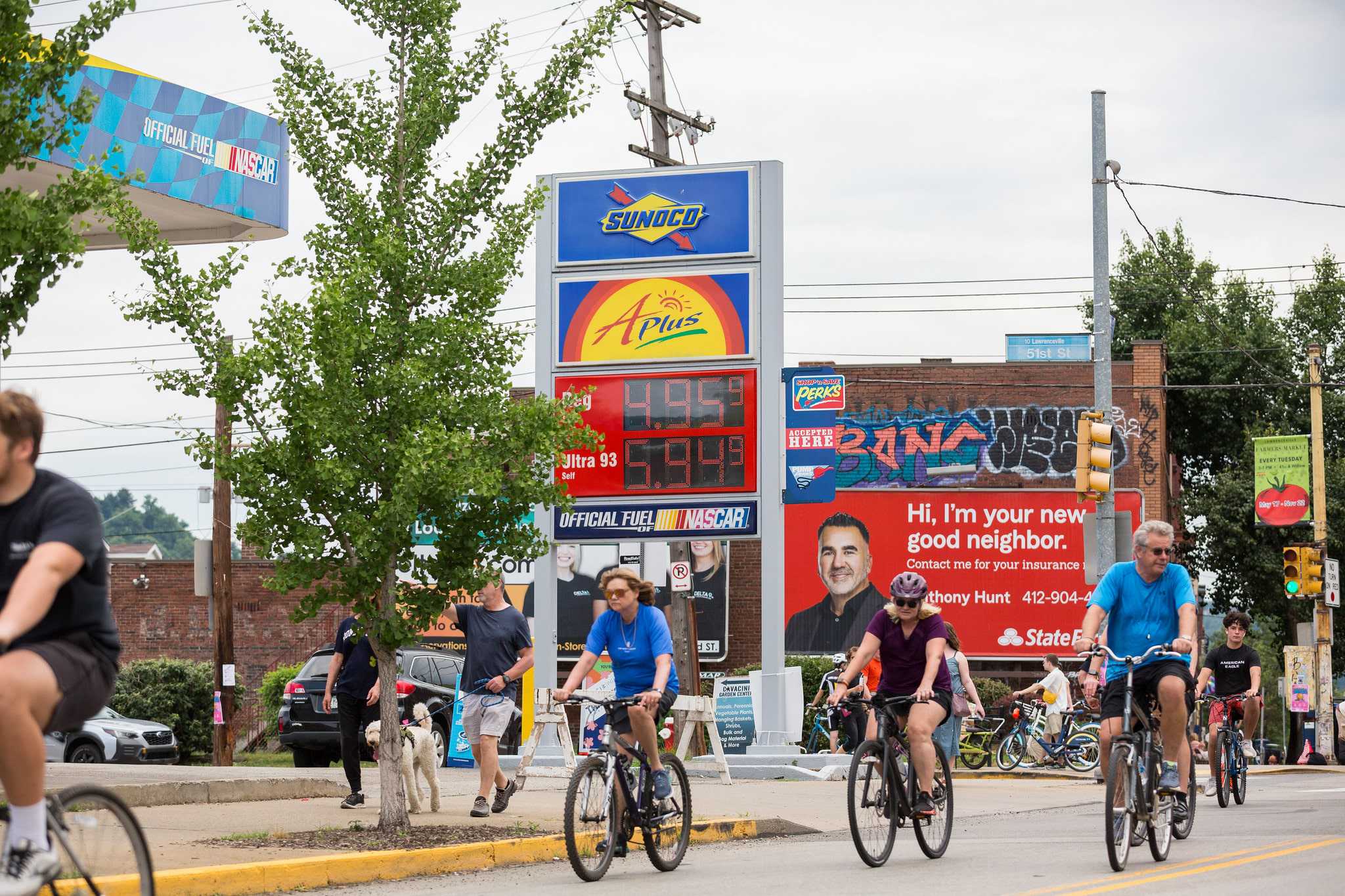
How to Save Money When Gas Prices Rise ⛽📈
In our twenty years of bike advocacy, we’ve seen gas prices skyrocket more than a few times, so this isn’t our first rodeo! Over those many years we’ve come upon many elegant solutions to oil dependence and exorbitant prices. So here are some of our favorite tips for saving some money at the pump, and although we are a little bike-biased, we also have some tips for non-bikers too.
1.) Bike Your Commute!
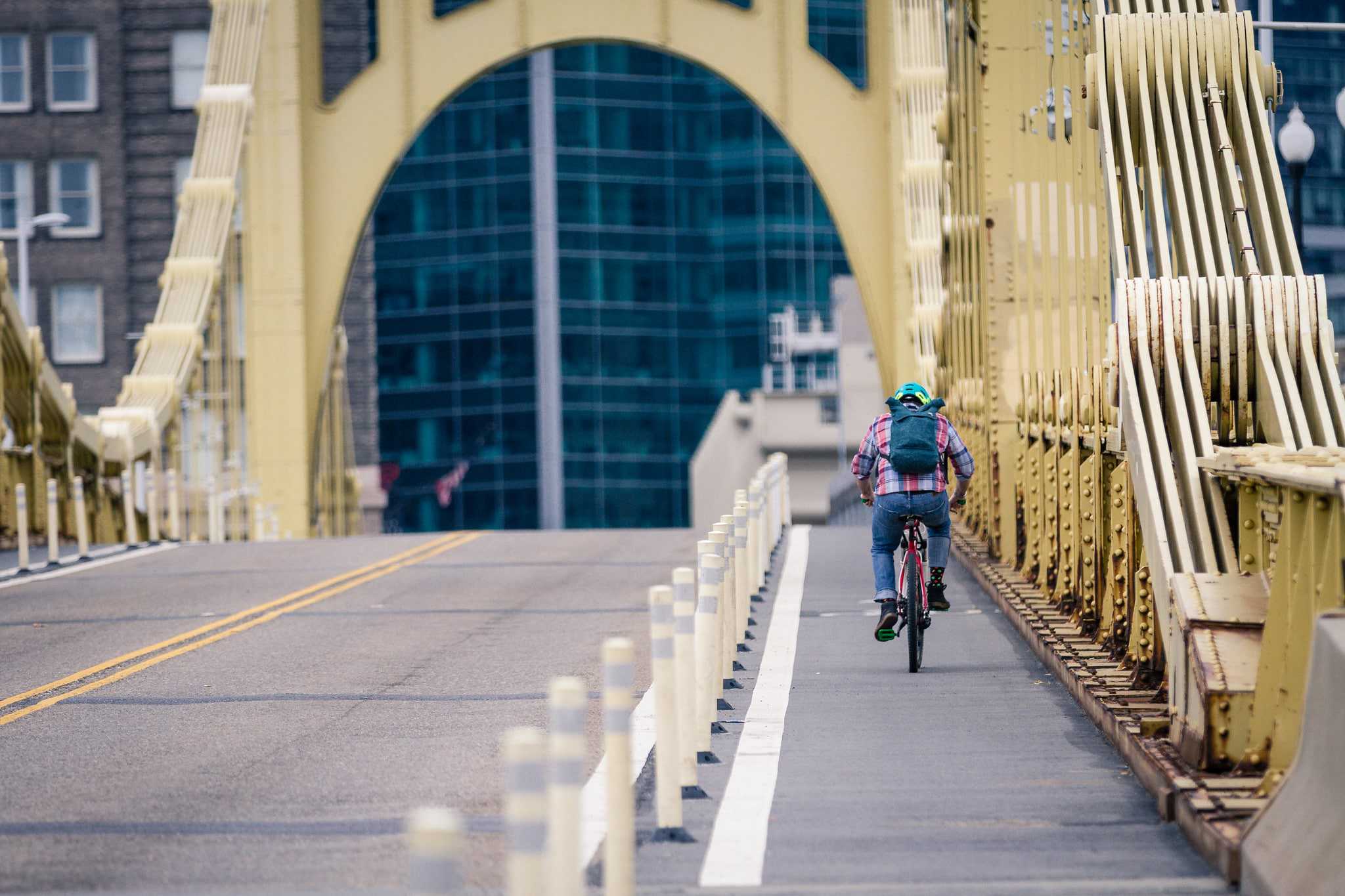
Easier said than done we know, but now is an excellent time to try this affordable, healthy, and sustainable form of transportation. Whether you are buying a new (or new-to-you) bike, refurbishing an older one, or using the POGOH bike share system, you have more options now than ever before. Remember, even if you own a car, biking more often can cut the cost of gas, parking, maintenance, and lower your insurance rates. For instance, replacing a five-mile round trip commute can save you $250 a year in gas costs alone! You can calculate your own commute here.
If you need some extra inspiration to replace your car trips with biking, check out The League of American Bicyclists’ Drive less Bike More Challenge starting July 1st! You can join the challenge, record your rides, and find a wealth of information on the Love to Ride platform!
If you haven’t biked in a while or are unsure about biking on city streets, brush up on the best practices with our educational videos and take a Confident City Cycling Class with fellow bike commuters. Lastly, if you’re a first-time rider and would like one-on-one lessons with a certified instructor, BikePGH can help!
2.) Buy a New Bike
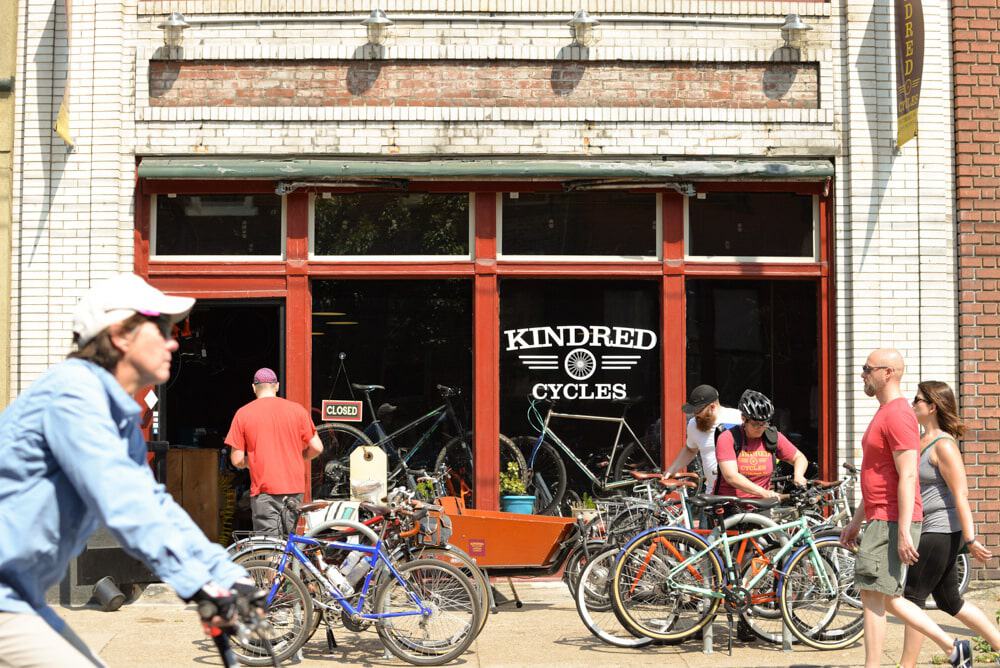
Although there are a wide variety of bikes available, the kind of bike you ride is all about your personal preferences, style, and resources. If you’re looking to buy a new bike, visit a local bike shop (LBS) to try out some different styles. You can also order a bike online, but you won’t be able to try the bike out beforehand, and you may not be able to return it if it’s not a good fit. Regardless of the style of bike you purchase, consider the ability to add lights for riding at night, racks or bags to carry your stuff, and fenders to keep your clothes dry if it rains. And don’t forget a quality lock to secure your bike when parking!
Many shops now carry eBikes (bikes with electrical assist) which can help you with longer distances, steep hills, carrying cargo, and generally not being worn out by your commute. Various types of cargo bikes (with or without electrical assistance) can also help you to carry the cargo, pets, and people that you might have used a car for.
3.) Buy a Used Bike
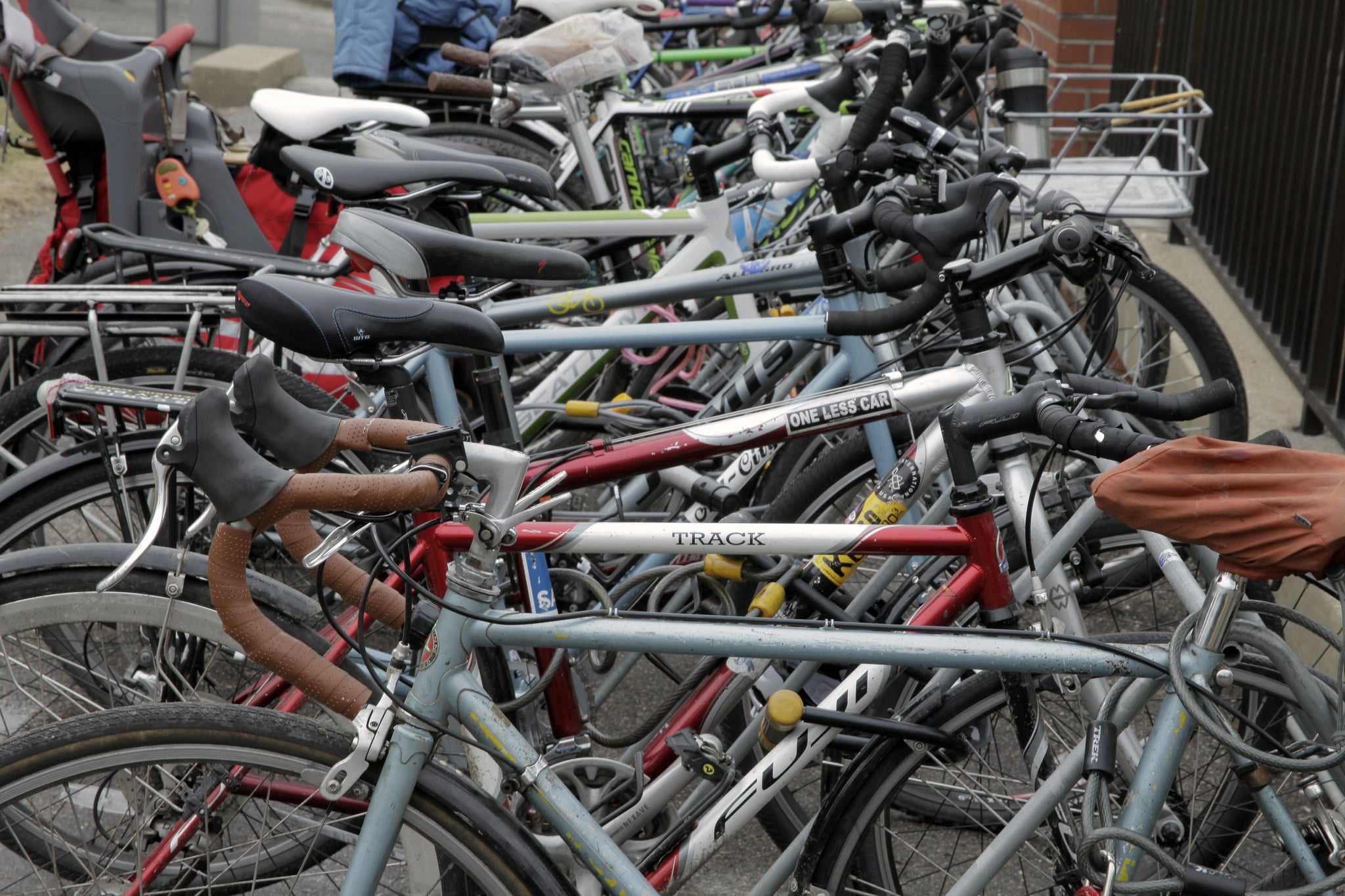
If you’re looking to buy a used bike, there are plenty for sale on Craigslist and Facebook Marketplace, but buyer beware! Used bikes may have rust, damage, and wear that may necessitate costly repairs. If possible, bring a knowledgeable friend to help inspect a used bike before purchasing, and if it seems like a bad deal – don’t be afraid to walk away.
4.) Refurbish an Old Bike
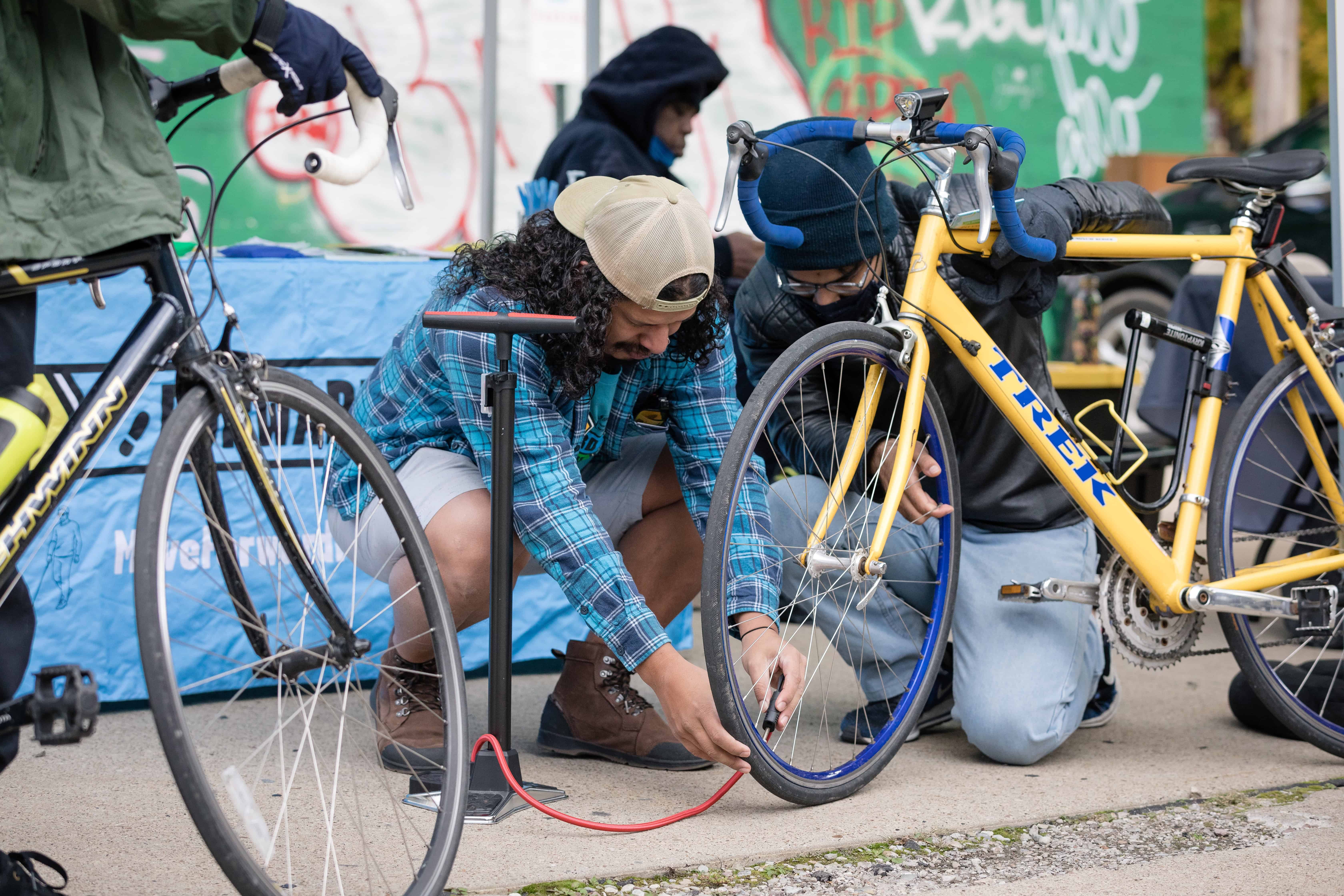
The solution to many of your gas pump woes may already be in your possession (just residing under dust and cobwebs in your basement). Dust off your trusty old steed, pump up the tires, oil the chain, and perform an ABC Quick Safety check – it may be in better condition than you remember. If you are unsure or think your bike needs professional attention, take it to your local bike shop (LBS) for an assessment. The price of labor and spare parts is likely a bargain compared to the price of gas, parking, insurance, and maintenance of a motor vehicle. Also, don’t be afraid to get a second opinion if you don’t like a quote, but prioritize shops that are honest and thorough even if they may charge a little more. Don’t be afraid to bring back a repair that is unsatisfactory, a good shop will appreciate the opportunity to make it right.
If you’re the DIY type, visit Free Ride and The Pitt Bike Cave. These cooperative shops may have the perfect project bike for you to rehabilitate.
5.) Bike and Scooter Shares

Launched in 2015, Pittsburgh’s bike share system has provided access to bikes for transportation for people throughout the city. Relaunched this spring as Pogoh, bike share in Pittsburgh is now better than ever. Half of Pogoh’s fleet utilizes an electric-assist which provides riders the extra boost needed to tackle Pittsburgh’s steep grades. Pogoh’s Mobility Justice Membership can also make mobility very affordable to the people who need it most.
Launched last year, Spin provides a dockless electrical scooter-share that can also help to reduce car trips.
6.) Use Multimodal Transportation

Did you know that thanks to the advocacy of BikePGH, all Pittsburgh Regional Transit buses have a bike rack and all T light rail cars allow bikes inside. Instead of driving, consider public transit for part of your journey and biking or walking the remainder. There is also bike parking at all PRT Park and Ride stations. Is your ride to work uphill? Consider taking public transit to work and biking downhill home. You can even take your bike on The Incline!
If you must drive part of your commute, consider bringing a bike in/on your car so you can drive less and bike more; you may even be able to beat congestion and save yourself parking costs by parking at a trailhead instead of parking at the office. Find all the trail parking lots and amenities here.
For the latest info about bikes on transit, see the Pittsburgh Regional Transit page.
7.) If You Must Drive, Drive Smarter

For some, driving may be the only viable option, but that doesn’t mean one can’t economize on gas when they’re behind the wheel. Here are some tips to save money while driving that have the added benefit of increasing safety and reducing congestion and pollution!
- Reduce your gas use by driving a hybrid or fully electric vehicle.
- Carpool with coworkers and split gas costs or alternate who drives their car on certain days.
- Keep your tires inflated to the recommended PSI and make sure your car is up to date on maintenance.
- Hypermile. Don’t accelerate aggressively and slam on your brakes, try to drive efficiently instead.
- Don’t speed, drive at the posted speed limit.
- Consolidate your trips. Plan your errands ahead of time and work them into your commutes. Avoid having to make multiple trips for things you may have forgotten earlier.
- Don’t idle. If your car is parked, turn your engine off. If you need to be in air conditioning, enter an air-conditioned building if possible and utilize theirs.
In a car-centric society rising gas prices cause pain to everyone, but at the same time, can be a catalyst for change. Changing our habits to be less dependent on oil and individual automobile use can change the nature of our society and economy to one that is more sustainable and resilient, better for our climate, and less vulnerable to the whims of geopolitics and oil-exporting countries.